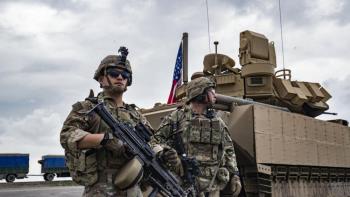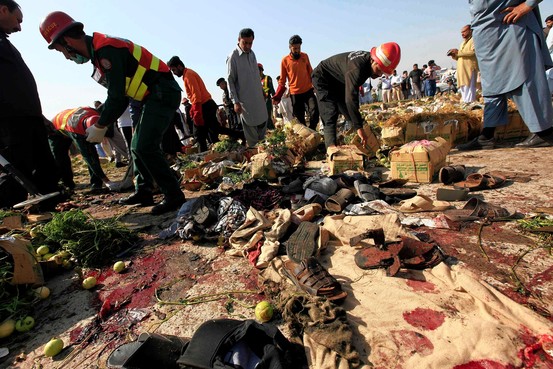Alwaght-On Monday, April 7, 2014, militant sources and Pakistan security officials declared that the conflict between these two Taliban parties has led to at least twenty Taliban belligerents killed which Pakistan Taliban chief Hakimullah Mehsud was among the dead. On Friday, as conflict goes on, at least ten Taliban forces in tribal regions were killed, and several were wounded .
This clash in the North Waziristan was between Hakimullah Mehsud's forces and Wali-ur-Rehman's. According to local officials, Wali-ur-Rehman's forces did ambush a car carrying Hakimullah Mehsud's forces last Friday night and killed them. It is noteworthy that all killed were belonged to Hakimullah Mehsud's forces led by Sheheryar Mehsud .
The internal clashes to stimulate Taliban groups in Pakistan are not a new event. Taliban in Pakistan was emerged under Baitullah Mehsud's leadership in 2007. There were trivial clashes and conflicts between Taliban groups, but the clashes have been intensified especially when Hakimullah Mehsud came to power after Baitullah Mehsud's death in 2009 .
Therefore, the power branches derived from Taliban were trying to take power and appoint their own leader for Taliban forces after Baitullah Mehsud's death. Accordingly, Taliban forces in different parts of Pakistan in particular those who are living in North Waziristan, South Waziristan, Mohmand, Swat, etc., were trying to appoint their own force as Taliban leader. On the one hand, Taliban group in Mehmand wanted to choose Omar Khalid Khorasani as a leader and Taliban group in Nuristan attempted to appoint Mullah Fazlullah as the leader of Taliban in Pakistan. On the other hand, groups like Hakimullah Mehsud's followers could not agree on one person as the leader. This evidently indicates that chaos and anarchy dominated over Taliban groups' relationship will lead to clashes, conflicts, and even wars among them .
Taliban forces in tribal regions including those who are living in North Waziristan (Miranshah), South Waziristan (Wana), Mohmand, Bajaur, etc., have had different contradictory statements on selecting leader for Taliban forces, negotiating with Pakistan's Nawaz Sharif government, and even fighting in Afghanistan, etc. Therefore, the face of Pakistan Taliban has changed and this group has turned into an unstable group that is without leadership .
On Saturday, November 2, 2013, Taliban's council in North Waziristan appointed Khan Syed Mehsud alias Sajna, the senior commanders of Taliban as the leader of Taliban in Pakistan, although other Taliban groups in particular Mehsudi tribes strongly disagree on the spot. As Azam Tariq, the spokesperson of Taliban in South Waziristan declared that their groups would not accept Syed Mehsud alias Sajna as their leader .
However, Members of the movement’s Shura, or advisory council of Taliban in Pakistan did appoint Maulana Fazlullah, chief of the Swat Taliban as the leader of this movement .
Despite these contradictions, TTP central spokesperson, Shahidullah Shahid stated to the media "According to TTP main party, no one is nominated to be Hakimullah Mehsud's predecessor. However, Esmatullah Shahin is the interim leader of Taliban of Pakistan ".
Some political experts like Saifullah Gol believed that the competition between Mullah Fazlullah and Omar Khalid Khorasani to be Taliban leader and Hakimullah Mehsud's predecessor would change the decentralized structure of Pakistan Taliban more and more. As he added, these Taliban groups have conducted independent military operations and followed their own independent policy .
However, these clashes indicate that there is an increasingly competition for grasping power of leadership among Taliban clans. There have been some clashes among different Taliban groups particularly those who are living in North Waziristan, South Waziristan, Tonk district in Khyber Pakhtunkhwa province, etc., since last week. Accordingly, at least forty-three Taliban forces were killed in aforementioned clashes .
According to some experts, these clashes are to take the leadership of Taliban. In addition, there are serious discrepancies between supporters and opponents of peace negotiation in Pakistan. These discrepancies will undoubtedly affect process of peace in Pakistan. These days, tribal elders in Pakistan are trying to reach a ceasefire between these groups and revitalize peace in the regions. These clashes will go on until the issue of Taliban leadership in Pakistan is resolved .
Among other possibilities, it can be possible that Pakistan administration has changed and weakened the relationship among Taliban groups by presenting & continuing peace negotiations on the one hand, and putting Taliban forces under its military power on the other hand. Some believe that a part of Pakistan Taliban clans particularly Haghani Network is Pakistan government's apparatus and playmaker in Afghanistan events. Some other state that these groups are seeking to establish an Islamic government in Pashtun regions where CIA, MI6 and even Saudi Arabia Intelligence services are active .



























